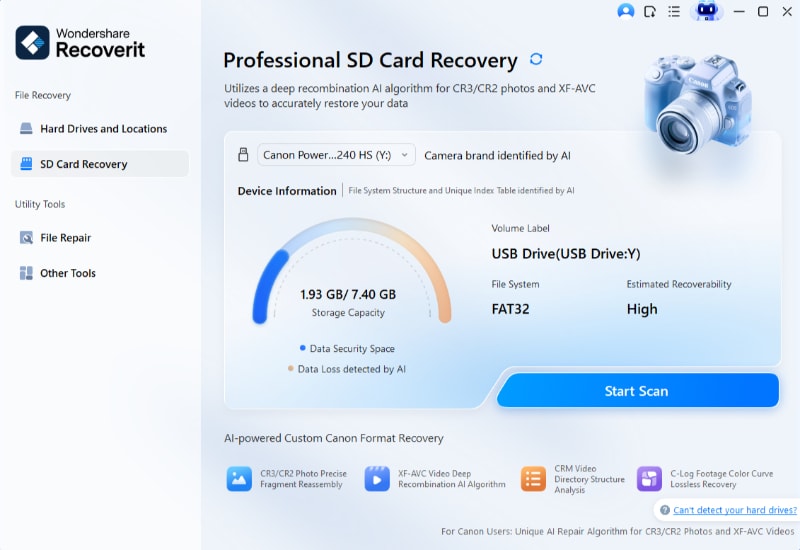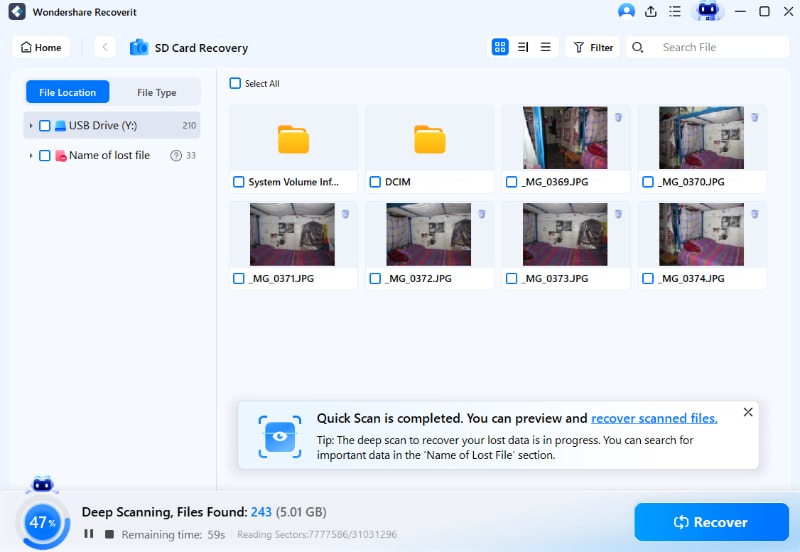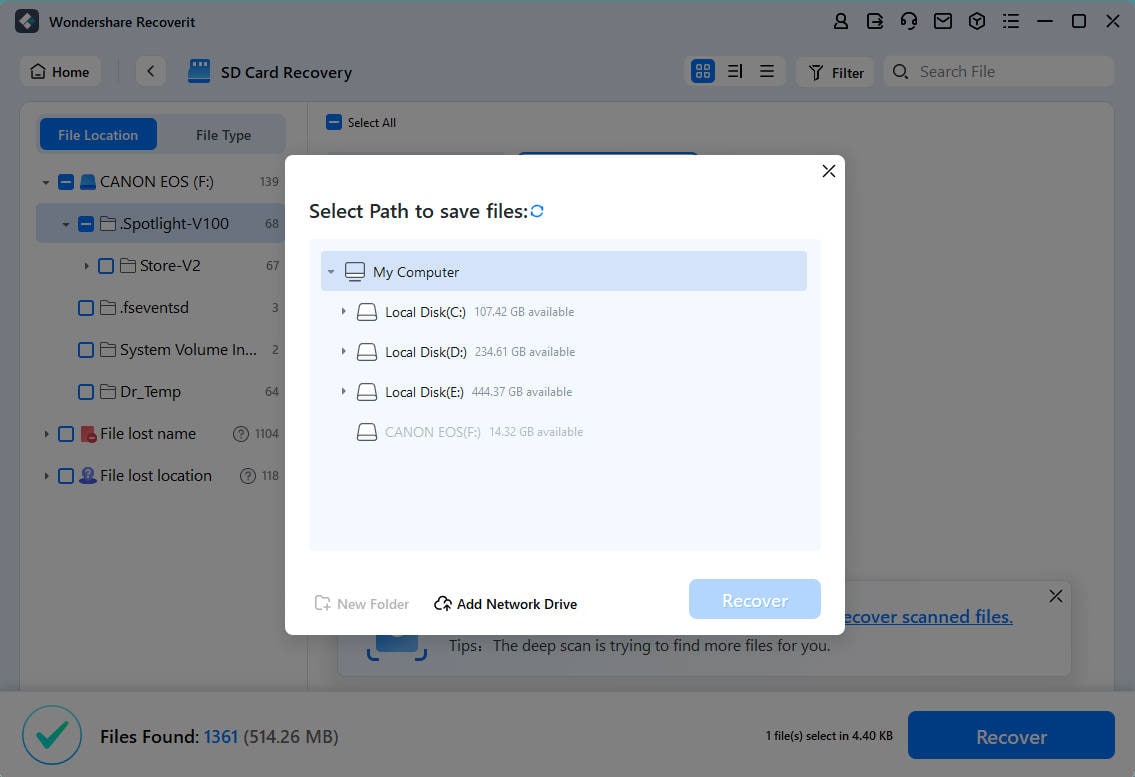The Raspberry Pi is a small but incredibly useful computer that can do many amazing things. Just like other electronic devices, it saves information on an SD card. Sadly, SD cards aren't completely reliable and can't shield users from making mistakes when managing files. As a result, it's easy to accidentally lose important data. However, there's no need to worry. This guide will show you the best software to recover data from a Raspberry Pi SD card.
Table of Content
Can You Recover Lost Files From Raspberry Pi SD Card?
Here are the common causes why data loss may occur on a Raspberry Pi SD card and their recovery chances.
| Causes | Description | Recovery Success |
| 🗑 Accidental Deletion | When files are mistakenly deleted, they are likely to be recovered. The actual files remain on the SD card until overwritten. Most data recovery software can help recover deleted files. | High |
| 🧹 Formatting | Performing a Quick Format (the most common formatting method in Windows) on the Raspberry Pi SD card, erases data by only recreating the file system structure without overwriting stored data. Consequently, data recovery is possible, especially with recovery software, but further use of the card should be avoided to prevent overwriting lost data. In contrast, If the SD card is formatted via a Full Format, the erased data becomes irretrievable. | High for Quick Format Low for Full Format |
| ⚡ Power failure or improper shutdown | Data corruption may occur if the SD card is written during a power failure or improper shutdown. Luckily, power outages rarely corrupt numerous files at once. Corrupted SD card recovery is often possible with data recovery software | High |
| ⛔ Hardware Failure | If the Raspberry Pi hardware fails, it may still be possible to recover data from the SD card by connecting it to another Raspberry Pi or computer with a card reader. However, some hardware failures can damage the SD card itself. | Medium |
| 🔨 Physical SD card damage | A physically damaged Raspberry Pi SD card that's unrecognizable by any device might be impossible to restrieve data from using only data recovery software. Top-tier SD card data recovery services can sometimes retrieve data from such cards, but success isn't guaranteed. | Low |
Notes:
- The longer the time between data loss and recovery attempt, the higher the risk of overwritten data. It's best to attempt recovery as soon as possible.
- Logical damage affects the file system or data structure, while physical damage refers to damage to the card's physical components. Only data lost to logical damage can be recovered using the methods described.
Understanding these factors is important when recovering lost data from your Raspberry Pi SD card. Now, let's explore effective methods for recovering files from a Raspberry Pi SD card.
Precautions Before Attempting Raspberry Pi SD Card Recovery

Before recovering files from Raspberry Pi SD card, be mindful of the following things:
- Don't use the SD card: As soon as you realize that data has been lost or deleted, it's important to stop using the SD card immediately. Continued usage can increase the risk of overwriting the lost data, making recovery more difficult.
- Back up the SD card (if possible): If you have a backup of the Rasbberry Pi SD card data, restoring the backup is always recommended instead of attempting data recovery. Backups ensure you have a copy of your important files and can avoid needing recovery altogether.
- Prepare a computer/laptop with reliable data recovery software: You will need a working device to recover data from the Raspberry Pi SD card. Install trustworthy data recovery software that is compatible with your operating system. Make sure to choose reputable software to ensure a successful data recovery process.
How To Recover Data From Raspberry Pi SD Card
In this section, we will cover the most efficient method for recovering deleted or lost files from Raspberry Pi SD cards on Linux, Windows, and macOS. Since Raspberry Pi OS (formerly known as Raspbian) is a Debian-based Linux distribution and officially supported by Raspberry Pi, we will begin with Raspberry Pi SD card recovery on Linux. If you are not a Linux user, feel free to skip ahead to the Raspberry Pi SD card recovery on Windows/macOS section.
Case 1. Recover Files From Raspberry Pi SD Card on Linux
As Raspberry Pi users are usually well-versed in the Linux operating system, we will begin by examining methods for recovering files from a Raspberry Pi SD card on Linux.
Most data recovery software on the market requires you to remove the affected SD card from your Raspberry Pi and connect it to a Linux computer using an SD card reader. This is because, as previously mentioned, to improve the chances of successful recovery, it's essential to avoid writing new data to the SD card, which could overwrite the lost information. By removing the SD card, you can prevent additional write operations from taking place.
However, removing the SD card carries the risk of causing further damage. To address this concern, we recommend using Wondershare Recoverit, a top solution that offers a Linux file recovery feature through a remote connection. This approach means you don't have to remove the SD card or install and run the software on your Raspberry Pi, minimizing the risk of data overwriting.
All you need is a working Windows or Mac PC to install the software and begin the recovery process. The video tutorial below will guide you through the process of recovering files from a Linux-based Raspberry Pi SD card using Wondershare Recoverit.
Case 2. Recover Files From Raspberry Pi SD Card on Windows/Mac
For Windows and macOS users, Wondershare Recoverit also stands out for its capabilities and user-friendly interface. With its advanced SD card recovery features and extensive file format support, Wondershare Recoverit has gained recognition as a Leader in Data Recovery by G2 users.
Here's how to recover files from a Raspberry Pi SD card using Wondershare Recoverit:
- Download and install Wondershare Recoverit on your Windows PC or Mac.
- Launch the program and select your Raspberry Pi SD card under the SD Card tab to start the scanning process.

- Recoverit will display all the scanned files on the screen in real-time.

- You can preview files to verify their recoverability and activate various filters to make the list of recoverable files more manageable.

- Finally, select the ones you want to recover and click the Recover button to save the recovered files from your Raspberry Pi SD card.

Conclusion
Losing data from a Raspberry Pi SD card is inconvenient. However, it is not the world's end because effective solutions exist. One best solution is to use Wondershare Recoverit. You may follow the instructions in this article to easily restore your important files. Remember to create regular backups of your Raspberry Pi SD card to avoid having to use them again in the future.
FAQ
-
How to recover files from Raspberry Pi SD card which can't boot?
To recover files from a unbootable Raspberry, you can use file recovery software designed for Linux systems, such as Wondershare Recoverit:
1. Download, install, and launch Recoverit on your Windows or Mac PC.
2. Click Linux and NAS on the interface.
3. Enter the IP, Port, and Account of your Raspberry Pi to establish a remote connection.
4. Wait for Recoverit to scan for lost files on your Raspberry Pi SD card.
4. Preview the desired files during the scanning process.
5. Select the files you want to recover and click Recover.
6. Choose a location on your PC to save the recovered files. -
Can I recover files from a formatted Raspberry Pi SD card?
Yes, it is possible to recover files from a formatted Raspberry Pi SD card using data recovery software. However, the success rate depends on whether the files have been overwritten by new data or not. The chances of recovery are higher if you attempt the recovery process immediately after formatting. -
Can I use an SD card from a different Raspberry Pi model?
Yes, most SD cards can be used interchangeably between different Raspberry Pi models. However, some operating system images may be optimized or designed specifically for a particular Raspberry Pi model. It is recommended to check the compatibility of the operating system image with your Raspberry Pi model before using the SD card. -
How to reset a Raspberry Pi SD card?
1. Backup your data: Save important files from the SD card to another location.
2. Download Raspberry Pi Imager: Visit https://www.raspberrypi.org/software/ and download the software.
3. Install the Imager: Follow the installation instructions.
4. Connect the SD card: Use an SD card reader to connect it to your computer.
5. Open Raspberry Pi Imager: Launch the application.
6. Select OS: Choose the "Raspberry Pi OS (32-bit)" option.
7. Pick the SD card: Select your SD card from the list.
8. Click "Write": This formats the SD card and installs the OS.
9. Wait for completion: A message appears when the process is done.
10. Eject SD card: Safely remove the SD card from your computer.
11. Reinsert the SD card: Place it back into the Raspberry Pi and turn it on.



 ChatGPT
ChatGPT
 Perplexity
Perplexity
 Google AI Mode
Google AI Mode
 Grok
Grok























